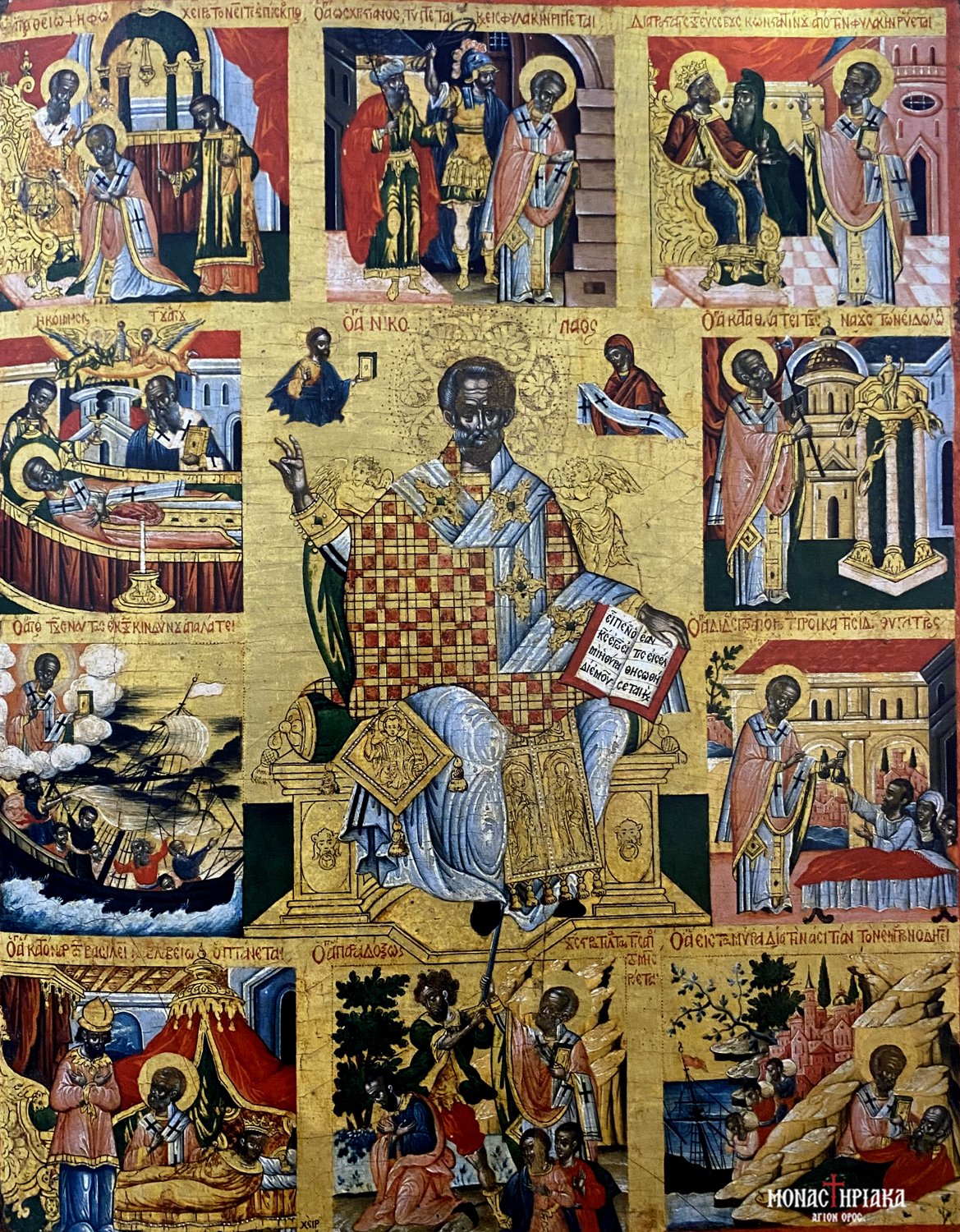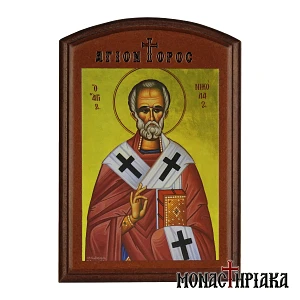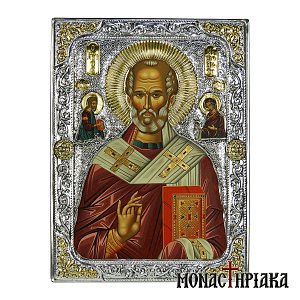Where and when did Saint Nicholas the Myrrhbearer live
Saint Nicholas the Myrrhbearer, was born in the city of Patara, located in Asia Minor, during the 3rd century AD to wealthy and devout Christian parents, who passed on to him the values of Christianity. The exact date of his birth remains unknown, but we know that he lived during the reigns of Diocletian (284-304 AD), Maximian (286-305 AD), and Constantine the Great.
How Saint Nicholas used his fortune to help
Unfortunately, he faced the loss of his parents at a young age. As a result, he inherited his family’s entire fortune. This gave him the opportunity to use his fortune for works of love and charity, distributing it to people in need.
His pure intentions were proven by his actions, but remained hidden. A typical example is the financial aid he extended to a struggling father with his three daughters. Saint Nicholas' contribution shielded these girls from corruption in difficult times, when their father was unable to meet the demands of daily living.

The work of Saint Nicholas as Archbishop of Myra and his imprisonment
He decided to devote the rest of his life to asceticism. With his special virtue, he was honored with the position of Priest in Patara and then with the position of Archbishop of Myra.
However, the Saint’s work did not meet with the approval of the local rulers, Diocletian and Maximus, who ordered his arrest and imprisonment. Although, even in prison, St. Nicholas taught and supported Christians.

After the liberation of Saint Nicholas and the rise of Constantine the Great, all Christians prisoners were freed.
Saint Nicolas returned to the archbishop’s throne and with the position he held, he was given the opportunity to attend the First Ecumenical Council.
Here you can find icons of St. Nicholas Myrrhbearer.
The sleeping of Saint Nicholas: when he died and when he celebrates
Saint Nicholas rested peacefully in 330 AD and his memory is celebrated on 6 December.

Why was Saint Nicholas named Myrrhbearer 'Myrovlitis'
The relics of Saint Nicholas were preserved in the city of Myra until the 11th century, within the temple built in his honor. After the First Crusade, a priest transported them to Italy, to the city of Bari, in 1087 AD.
Holy myrrh emanated from the relics of Saint Nicholas, which is why he received the characteristic "Myrrhbearer"
Where are the relics of Saint Nicholas
The relics of Saint Nicholas are preserved in various locations in Greece and in other countries, including Russia, Bucharest, and Italy.

What are the 'Nikolobarbara,' and who are the Saints that celebrate
According to popular tradition, the days of December 4th, 5th, and 6th are known as "Nikolobarbara." It includes the celebrations of Saint Barbara, Saint Savvas, and Saint Nicholas, respectively.
Due to the association of these celebrations with adverse weather conditions, these days are often related to death, especially in the Peloponnese region. As stated in the folk saying "Saint Barbara intensifies the cold, Saint Savvas makes it rough, and Saint Nicholas buries it."
Here you can find handmade iconography from Mount Athos depicting Saint Nicholas and Saint Barbara.
Why is Saint Nicholas considered the Patron Saint of Sailors
The sanctity of Saint Nicholas is recognized by both the Orthodox and Catholic Church. Saint Nicholas, in addition to his good deeds, performed numerous miracles, through which he became the Patron Saint of Sailors and the entire Navy.

The miracle of Saint Nicholas with the sea storm
According to tradition, during the time Saint Nicholas was sailing in order to visit and pray homage to the Lord's tomb in the Holy Land, he encountered many difficulties.
Suddenly, a storm broke out, causing disquiet among the crew and passengers on the ship. In fact, a sailor slipped from the mast, resulting in the loss of his life.
Nevertheless, Saint Nicholas, with faith and prayer to God, calmed the storm, and the sea became calm. With the help of God, he managed to resurrect the sailor. Many, witnessing this miracle, approached him to find their salvation.
Find here: icon with the Miracle of Saint Nicholas.
For this reason, his feast day (December 6) is an official holiday for the Hellenic Navy, the Coast Guard, ships, and port authorities.

Why was Saint Nicholas named 'Streidás'
During the Iconoclasm period, many believers threw icons of the Saints into the sea to preserve them from the iconoclasts. One of these icons was that of Saint Nicholas.
The mosaic icon of Saint Nicholas "Streidás" at Holy Monastery of Stavronikita
Over time, the icon of Saint Nicholas was discovered near the Holy Monastery of Stavronikita on Mount Athos. Wrapped in fishermen's nets, the sacred icon floated in the sea and was headed towards the Monastery.
The icon was mosaic and had an oyster affixed right on the forehead of Saint Nicholas. In their attempt to remove it, blood ran from the wound opened by the oyster. Thanks to this miracle, even today, he is called Saint Nicholas "Streidás".
Where is the icon of Saint Nicholas "Streidás" kept
During that time, Patriarch Jeremiah the Elder was assisting in the reconstruction of the Monastery of Stavronikita after a severe fire. When he witnessed the miracle, he decided to dedicate the Monastery in honor of Saint Nicholas.
The icon of Saint Nicholas "Streidás" is considered one of the most miraculous icons of Mount Athos, and the oyster is preserved as a sacred relic.
Here you can find the article about the Holy Monastery of Stavronikita.

















